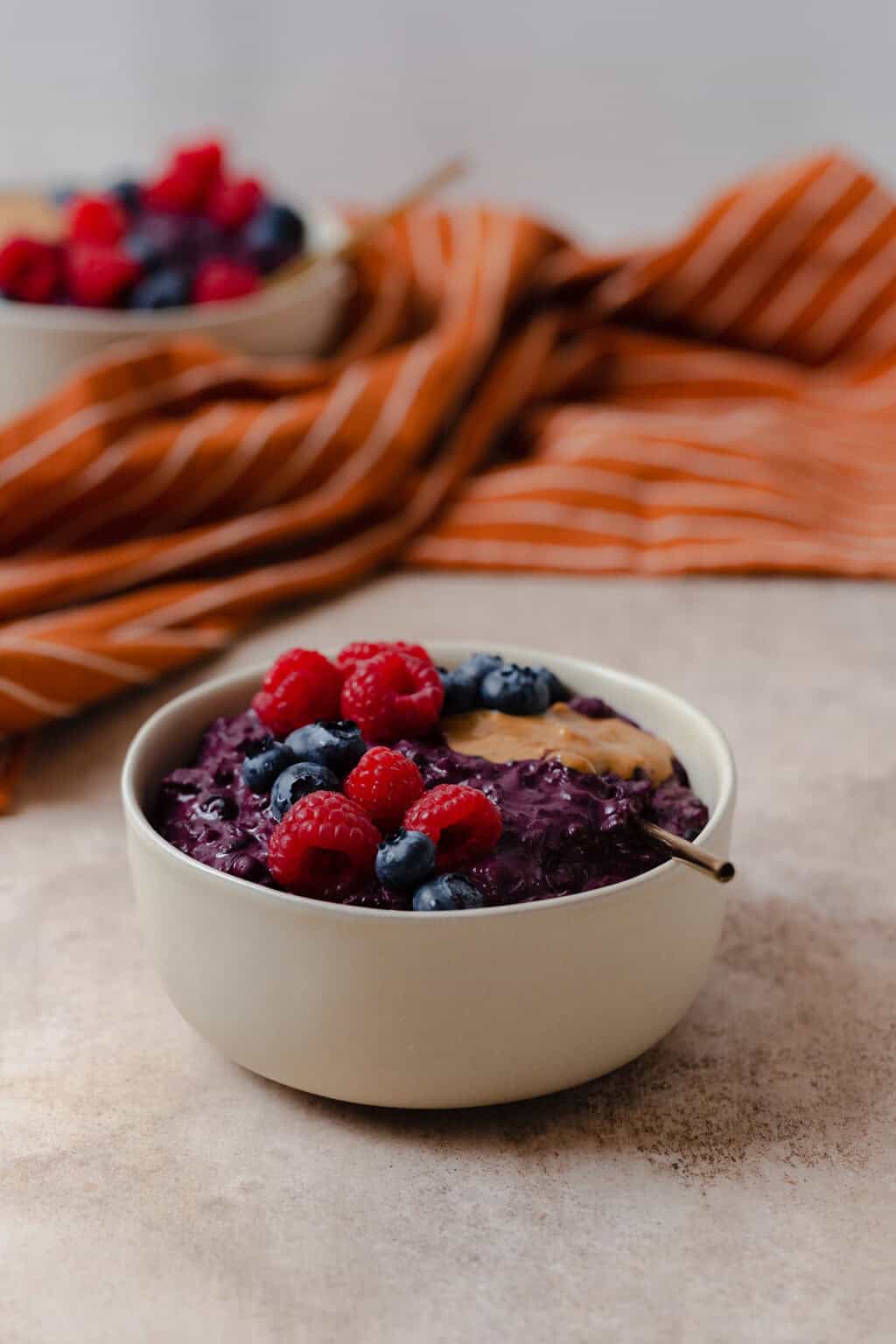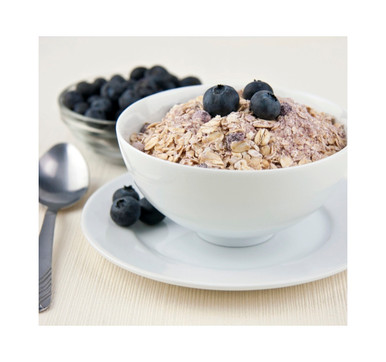
A Taste of the Wild: Unearthing the Magic of Native American Wild Berry Oatmeal
The gentle crackle of a morning fire, the crisp, cool air carrying the scent of pine and damp earth, and a steaming bowl of sustenance – this is the essence of a truly grounding breakfast. For centuries, indigenous peoples across North America have harnessed the bounty of the land, transforming simple, natural ingredients into nourishing meals that sustained their communities. Among these timeless culinary treasures, Native American wild berry oatmeal stands out as a harmonious blend of wholesome grains and the vibrant, sweet-tart explosion of foraged fruits.
This dish is more than just a breakfast; it’s a connection to heritage, a celebration of the seasons, and a testament to the ingenuity of those who lived in deep communion with nature. It speaks of knowledge passed down through generations, of understanding the subtle rhythms of the wild and knowing where to find its most precious gifts.
The Roots of the Recipe: A History of Foraging and Sustenance

Before the advent of modern agriculture and processed foods, the diet of Native American tribes was dictated by the land’s offerings. Grains like corn, beans, and squash formed the "Three Sisters," a cornerstone of sustenance. However, the landscape was also rich with a dazzling array of wild berries, each ripening at different times and offering unique flavors and nutritional benefits.
Berries were not merely a delightful addition to meals; they were vital sources of vitamins, antioxidants, and natural sugars. They were gathered by hand, a communal activity that fostered social bonds and reinforced the importance of shared resources. The process of collecting these tiny jewels was often a labor of love, requiring patience, keen observation, and a deep understanding of the environment.
Oatmeal, while not as universally prevalent as corn in all Native American diets, was certainly consumed in various forms by some tribes, often ground from wild oats or other indigenous grains. When combined with the abundant wild berries, it created a breakfast that was both energy-rich and packed with natural goodness. Think of it as an ancient superfood, predating our modern understanding of nutrition by millennia.
The Stars of the Show: Unveiling the Wild Berries
The specific berries used in this traditional dish would have varied greatly depending on the geographical region and the season. However, some of the most commonly foraged and incorporated berries include:
- Blueberries (Various Species): Often referred to as "star berries" or "sacred berries" by some tribes, wild blueberries are small, intensely flavored, and bursting with antioxidants. They were a staple in many regions, found in forests, meadows, and bogs.
- Raspberries (Various Species): Sweet and slightly tart, wild raspberries offered a delicate flavor that complemented the earthiness of grains. They were frequently found along woodland edges and in clearings.
- Blackberries (Various Species): Larger and often more robust in flavor than raspberries, wild blackberries provided a satisfying sweetness and a wealth of nutrients. They thrived in sunny areas and along hedgerows.
- Strawberries (Wild Varieties): Tiny but intensely fragrant and sweet, wild strawberries were a prized find, often appearing in early summer. Their delicate flavor was a special treat.
- Elderberries: While often cooked before consumption due to certain compounds, elderberries offered a deep, rich flavor and were valued for their medicinal properties. They were typically found in damp areas.
- Cranberries: Tart and slightly astringent, cranberries were a significant source of Vitamin C and were often preserved for winter use. They grew in bogs and wetlands.
- Huckleberries: Similar to blueberries but often with a more intense, sometimes resinous flavor, huckleberries were a significant food source for tribes in mountainous and forested regions.

The magic of using wild berries lies in their unparalleled flavor profile. Unlike cultivated varieties, wild berries often possess a more concentrated sweetness, a sharper tang, and a more complex aroma, shaped by the soil, sunlight, and rainfall they experience.
The Humble Oatmeal: A Canvas for Flavor
While modern oatmeal often refers to rolled oats, traditional Native American preparations might have involved grinding wild grains, including wild oats, into a coarse flour. This flour would then be cooked with water or, if available, milk from domesticated animals like bison or deer (though less common than plant-based preparations). The result would be a porridge that served as a hearty and filling base, ready to absorb the vibrant flavors of the berries.
The beauty of oatmeal as a base is its neutral yet comforting character. It provides a creamy texture and a subtle, nutty flavor that allows the wild berries to truly shine. It’s a grounding element that balances the bright, zesty notes of the fruit.
Crafting Your Own Native American Wild Berry Oatmeal: A Modern Interpretation
While finding true wild berries can be a challenge for many today, we can honor the spirit of this tradition by using the best quality, ethically sourced berries available. This recipe is a modern interpretation, designed to be accessible while paying homage to the ancestral culinary practices.
The key is to embrace the simplicity and the natural goodness of the ingredients. Avoid over-processing or adding too many artificial sweeteners. Let the inherent flavors of the oats and berries guide you.
Here’s a recipe that captures the essence of this time-honored dish:
Recipe: Ancestral Embrace Wild Berry Oatmeal
This recipe aims to recreate the spirit of Native American wild berry oatmeal, using readily available ingredients while celebrating the flavors of the wild.
Yields: 2 servings
Prep time: 5 minutes
Cook time: 15-20 minutes
Ingredients:
-
For the Oatmeal Base:
- 1 cup rolled oats (old-fashioned oats are preferred for texture; steel-cut oats can be used but will require longer cooking time)
- 2 cups water (or a mix of water and milk for a creamier texture; historically, water or plant-based liquids would have been common)
- 1/4 teaspoon sea salt (or to taste)
-
For the Wild Berry Compote:
- 2 cups mixed wild berries (fresh or frozen). Ideal combinations include:
- 1 cup blueberries
- 1/2 cup raspberries
- 1/2 cup blackberries
- (Alternatively, use a good quality frozen mixed berry blend that resembles these components)
- 1-2 tablespoons maple syrup or honey (adjust to your sweetness preference; historically, natural sweeteners were used sparingly)
- 1 tablespoon lemon juice (optional, to brighten the berry flavors)
- 1/4 teaspoon ground cinnamon (optional, adds warmth)
- 2 cups mixed wild berries (fresh or frozen). Ideal combinations include:
-
Optional Toppings (for authenticity and texture):
- A sprinkle of chopped nuts (walnuts, pecans, or almonds)
- A drizzle of extra maple syrup or honey
- A few fresh berries for garnish
Instructions:
-
Prepare the Wild Berry Compote:
- In a small saucepan, combine the mixed berries, maple syrup (or honey), lemon juice (if using), and cinnamon (if using).
- Place the saucepan over medium heat.
- Bring the mixture to a gentle simmer, stirring occasionally.
- Cook for about 5-7 minutes, or until the berries have softened and released their juices, creating a syrupy compote. You can gently mash some of the berries with the back of your spoon if you prefer a smoother texture.
- Remove from heat and set aside.
-
Cook the Oatmeal:
- In a medium saucepan, combine the rolled oats, water (or water/milk mixture), and sea salt.
- Bring the mixture to a boil over medium-high heat, stirring occasionally to prevent sticking.
- Once boiling, reduce the heat to low, cover, and simmer for 15-20 minutes, or until the oats are tender and have absorbed most of the liquid. Stir occasionally to ensure even cooking and to prevent sticking.
- If using steel-cut oats, follow package directions, which will involve a longer cooking time.
-
Assemble and Serve:
- Divide the cooked oatmeal between two serving bowls.
- Spoon a generous portion of the warm wild berry compote over the top of each bowl of oatmeal.
- Add any optional toppings, such as chopped nuts or an extra drizzle of sweetener.
- Serve immediately and enjoy the taste of ancestral flavors.
Tips for Success and Variations:
- Berry Selection: If you have access to local wild berries, use them! If not, a high-quality frozen mixed berry blend will work beautifully. Avoid overly processed berry fillings that may contain excessive sugar.
- Sweetness: Taste your berries before adding sweetener. Some wild berries are naturally sweeter than others. Adjust the maple syrup or honey to your personal preference.
- Texture: For a thicker oatmeal, use less liquid or cook for a longer period. For a thinner oatmeal, add a little more liquid.
- Creaminess: For a richer, creamier oatmeal, substitute half of the water with milk (dairy or non-dairy).
- Spice: Experiment with other warming spices like a pinch of nutmeg or cardamom in the oatmeal base.
- Foraging Spirit: If you are interested in foraging for wild berries, ensure you have proper identification guides and knowledge to distinguish edible berries from poisonous ones. Always forage responsibly and sustainably.
- Modern Grain Alternatives: While rolled oats are used here, you could also explore other whole grains like quinoa flakes or buckwheat groats for a different nutritional profile and texture.
The Enduring Legacy of Wild Berry Oatmeal
In a world increasingly focused on convenience and mass production, there is a profound beauty in reconnecting with food traditions that honor the earth and its gifts. Native American wild berry oatmeal is a powerful reminder of this connection. It’s a dish that nourishes not just the body but also the soul, evoking a sense of history, resilience, and the simple, profound pleasure of tasting the wild.
As you savor each spoonful, take a moment to appreciate the journey of these ingredients – from the sun-drenched meadows and shaded forests where they grew, to the hands that gathered them, and the generations who perfected their preparation. It’s a culinary experience that transcends time, offering a delicious and meaningful glimpse into the rich heritage of Native American foodways. It is a taste of the wild, a whisper of the ancestors, and a truly wholesome start to any day.


